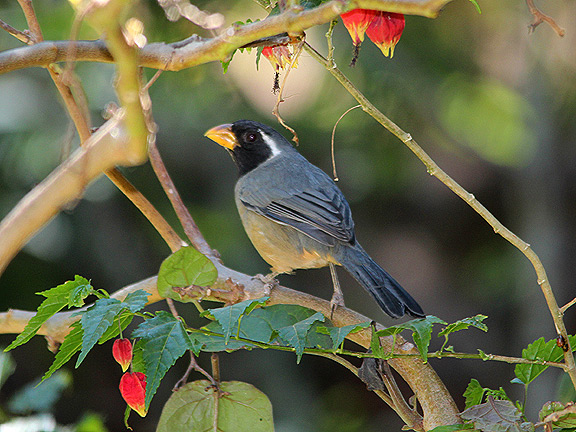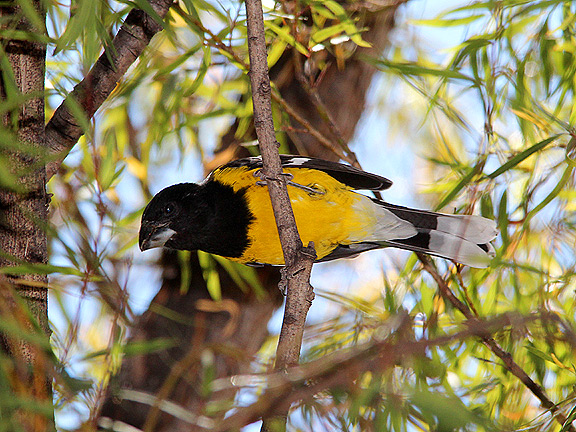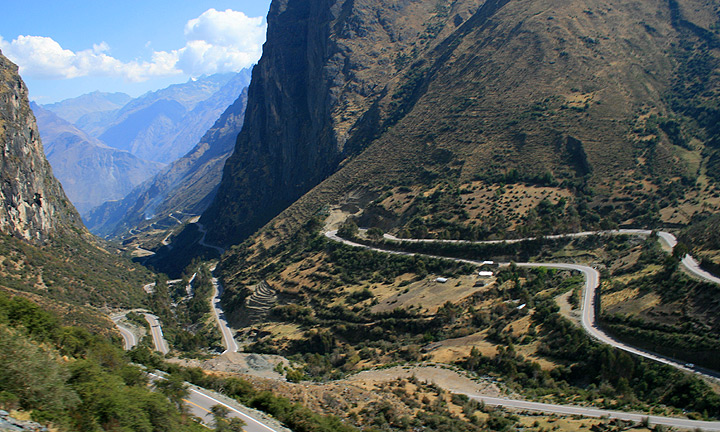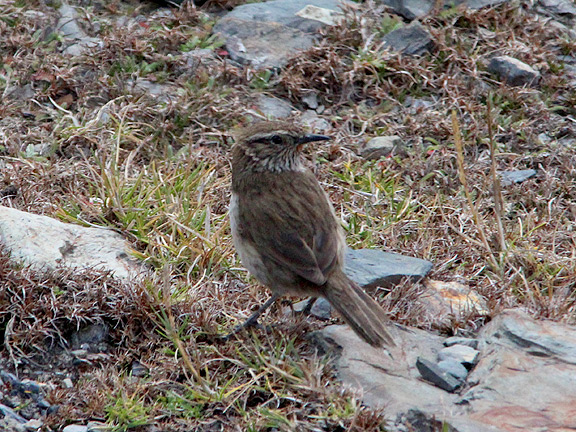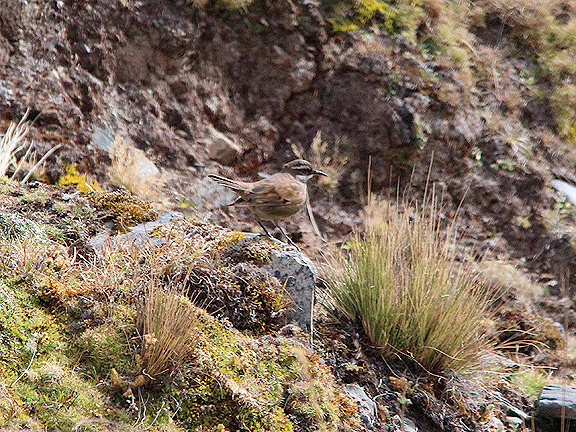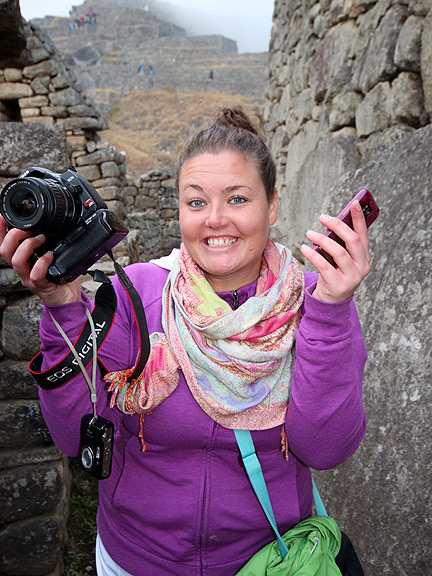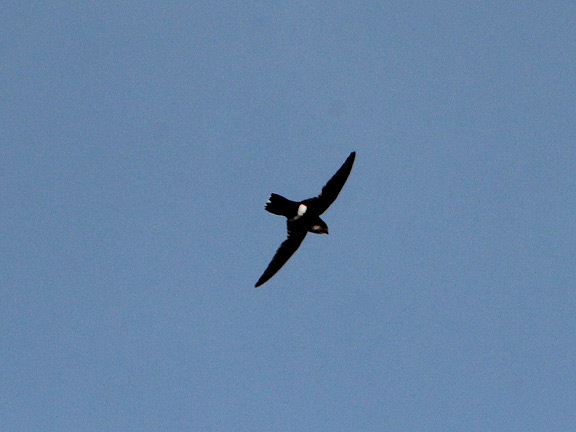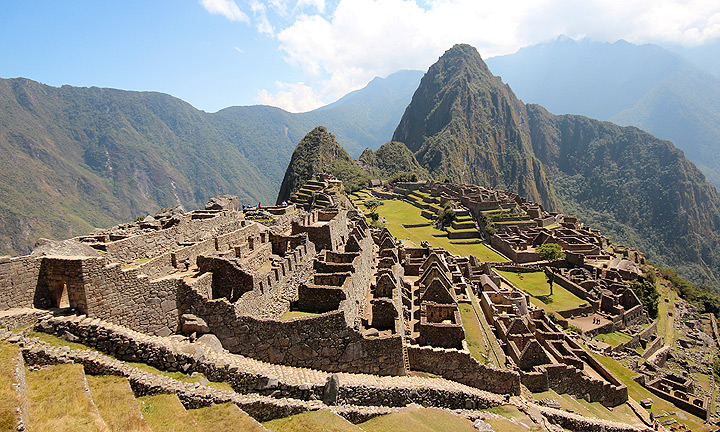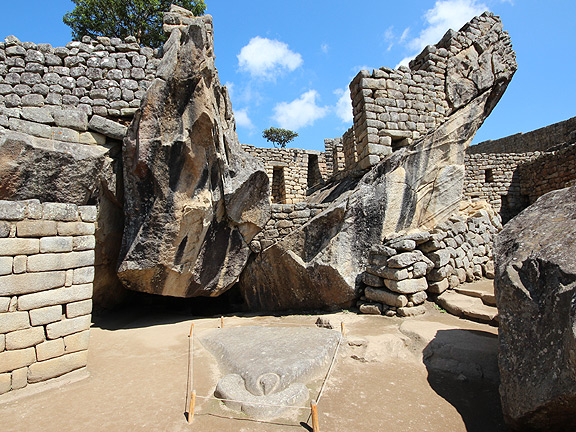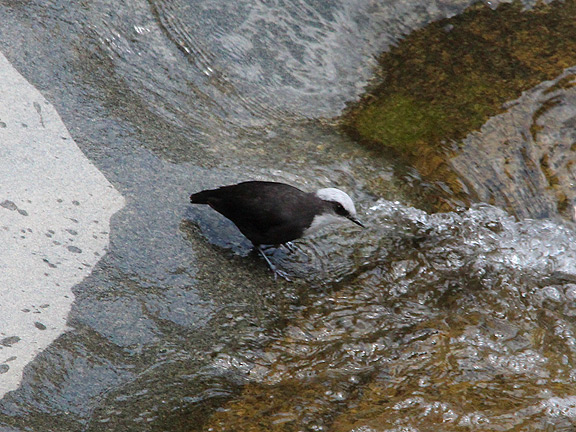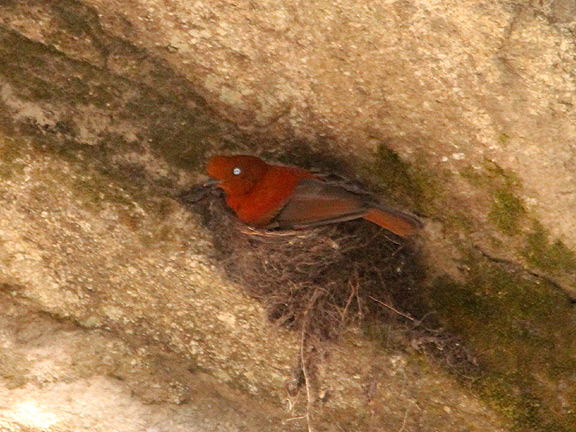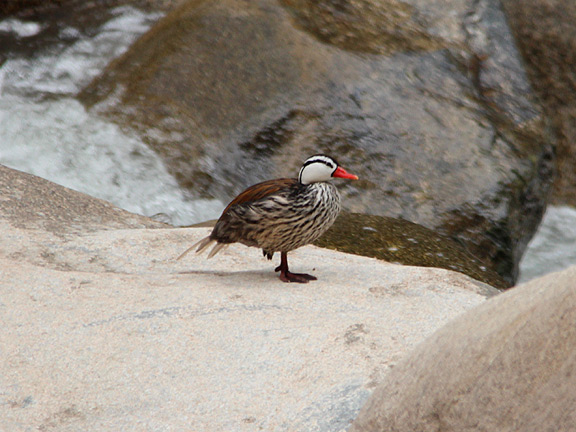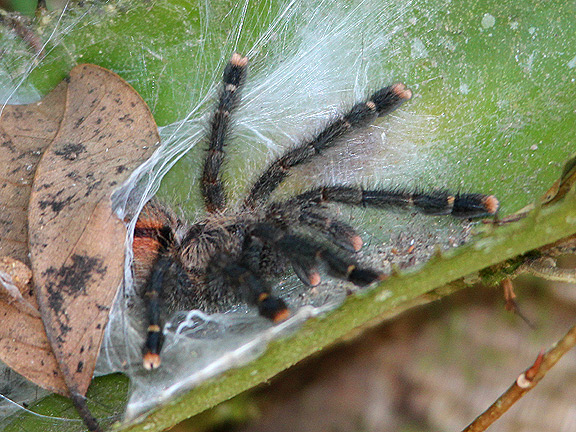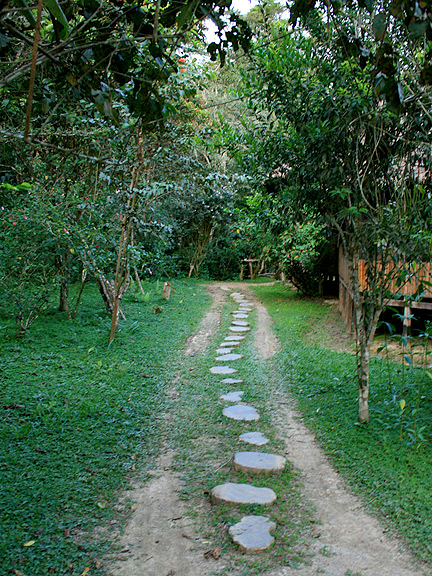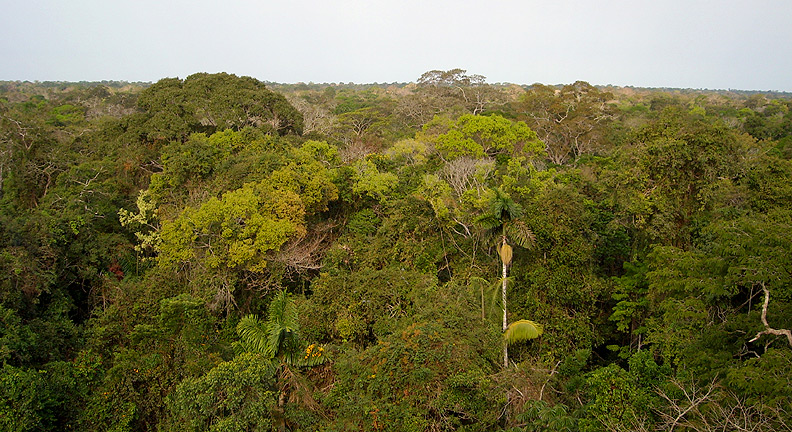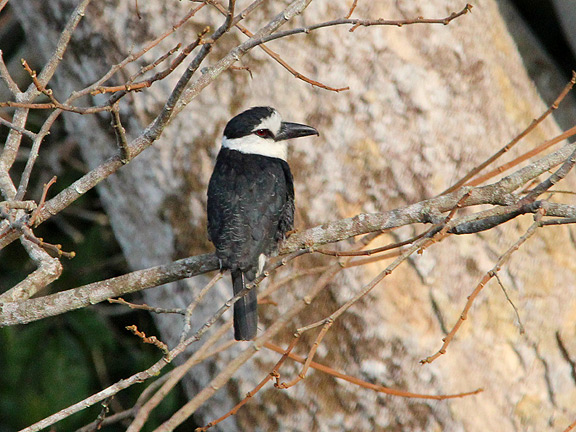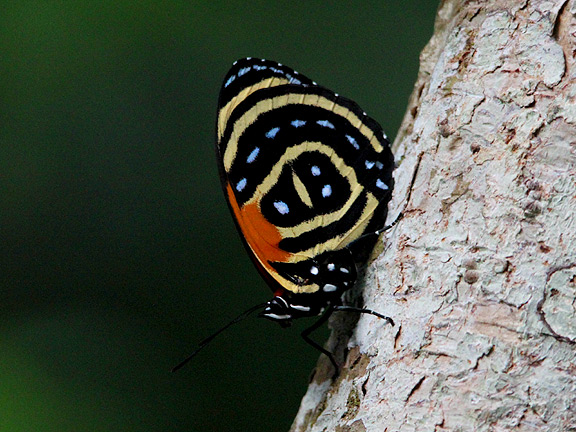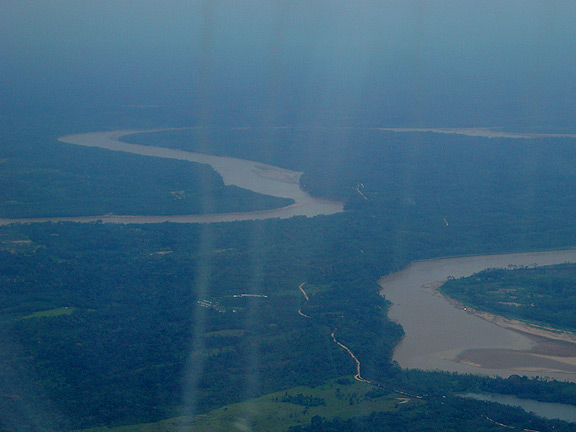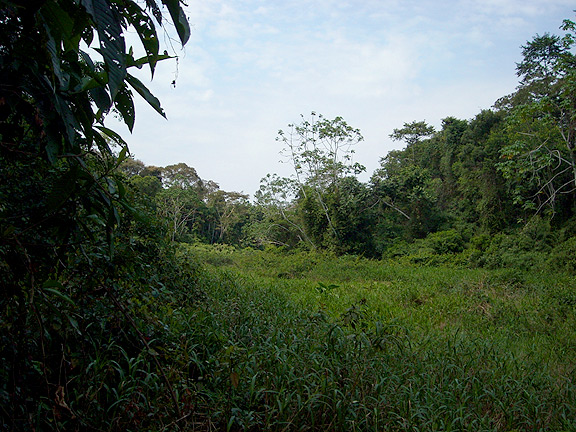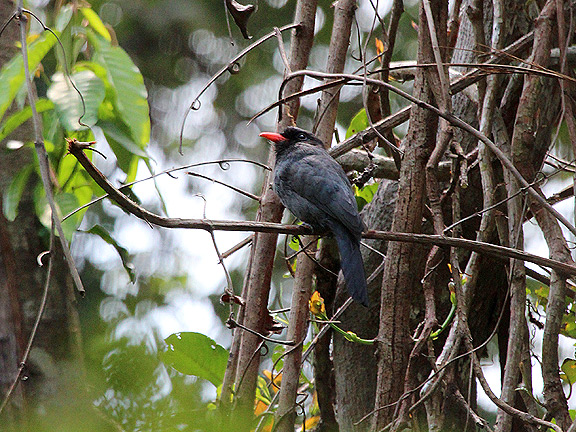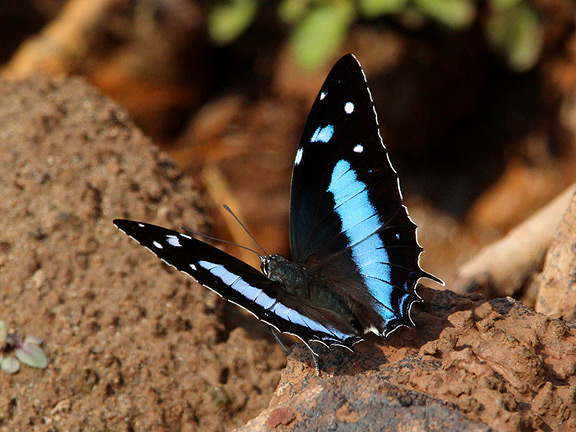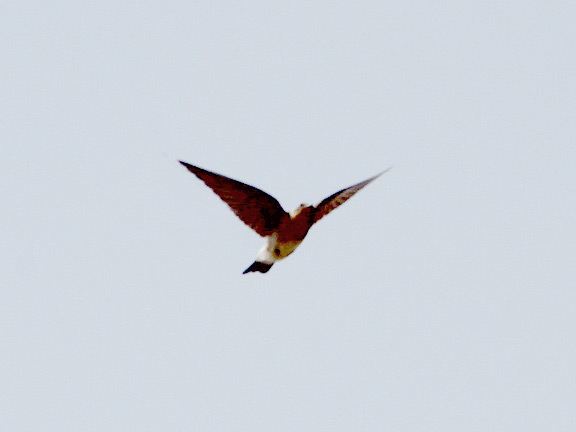I don't remember waking up once during the night following Machu Picchu. The bed was extremely comfortable, and I hadn't gotten a full night sleep in some time. We had been getting up between 4am and 6am for most of the past 2 weeks, so when we didn't set an alarm and didn't wake up till some time around 9am I was okay with that. While Sam slept a little longer I took my binoculars and camera and headed out onto the grounds to take a look around. From what I could tell there were very few people staying at the large property. The grounds were immaculate--water features, trees, flowers, gardens, and a stretch of the river--plenty of habitat for "feeder" birds. The trees right outside our room actually proved to be the most productive for birds both days we stayed here. CINEREOUS CONEBILL were often seen high in the tree tops fumbling around for food.
Aside from the conebills there was almost always a BAND-TAILED SEEDEATER or two present. I have no idea what the tree was, but it had something those two species really enjoyed. EARED DOVES were everywhere on the property. You couldn't walk 10 feet without flushing one, two , or a flock of ten even. Second most abundant were CHIGUANCO THRUSHES often running ahead of you on paths as you made your way around.
There were several Peacocks roaming the grounds, as well as a small menagerie of rescued parrots. Scarlet, Blue-and-gold, and Red-and-green Macaw were all here and sat in the trees near the chapel at the center of the grounds. A single Blue-headed Parrot without a tail was also present. There were usually a dozen or so RUFOUS-COLLARED SPARROW here picking up seed form the food the parrots were eating. While I was walking through the trees here I flushed a GOLDEN-BILLED SALTATOR, finally getting a good look at a bird I had seen the previous week for a fleeting second.
Ironically I had seen both trainbearers, and the mountaineer, but somehow missed the "common" Giant Hummingbird. Even now 2 months later I still don't know how such a common bird managed to evade me, while I saw a number of rare, and hard to find species. That's just birding though. Back by our rooms I saw what I considered the most stunning bird of the last couple days--and honestly, it's pretty hard to beat in overall flash anywhere in the highlands. A pair of BLACK-BACKED GROSBEAKS were often seen moving about right outside our patio and the golden-yellow bodies were just striking in the trees.
Walking around the property it wasn't uncommon to see flocks of MITRED PARAKEETS flying high above the valley, or ROCK PIGEONS crossing the grounds between fields and roosts. Several times ANDEAN GULLS and PUNA IBIS could be seen making their way along the river, and a VARIABLE HAWK was seen soaring and sitting atop a power pole. This made up the majority of the birds seen at the resort. I did flush one other conebill species, a WHITE-BROWED CONEBILL, but didn't manage a photo. In the end the last few days were more just for relaxation before going home--I imagine I could have seen quite a few birds had I hired someone to take me into the hills--instead the only birding outside the gates I did was when we hired a driver to take us to Abra Malaga Pass the following day.
I'll admit I blew it with Abra Malaga. I should have A. hired a professional birding guide, and/or B. done a little more research about birding there. We had our hotel call us a driver and we sped off into the highlands to see what we could find. The bird list for Abra Malaga and Penas is impressive and hosts a number of spectacular endemics. I figured it would be a cinch. We left around lunch which was another mistake--the birds just weren't out and active int eh afternoon as I hoped, and a nasty wind picked up and blew pretty much the entire time. The drive up is a dizzying 4,000' climb from Sacred Valley on a winding road that hugs the sides of the mountains. The view is spectacular, but you go up in elevation fast and that took its toll on Sam.
As we rose into the mountains clouds started to cover the sun, dropping the temperature. Along with the wind it was pretty unfavorable to be outside. We reached the pass and I thought to myself, this doesn't seem like a great birding spot. A couple of distant MOUNTAIN CARACARA were cool to see again, but way to far away to photograph. In the rocks scrambling among the garbage just this side of the east slope there were a few birds. The most abundant were the WHITE-WINGED DIUCA-FINCH--who appear awkwardly shaped in the field guide--really were that awkward looking in real life.
PLUMBEOUS SIERRA-FINCH and CREAM-WINGED CONCLODES were also quite common here and at several places below where we stopped to check out the streams. Both CORDILLERAN and STREAK-THROATED CANASTERO were seen hopping around here as well. ANDEAN LAPWINGS looked out of place on the high slopes, but added a dash of excitement when they flew squealing from one place to another. And not to be missed we also added fly PARAMO PIPIT and PALE-FOOTED SWALLOW--a couple more lifers as the trip winded down.
I kept reading about a habitat in the books called poleylips forest, which was the specialty habitat up here where I was supposed to find a bunch of birds--but I did not see this habitat anywhere. I did however see countless signs boasting of how this area was protected for the endemic Royal Cinclodes. Now the real shocker wasn't that I couldn't find the habitat--I later learned you have to hike up over a ridge to where the habitat is located out of view form any of the roads. What was really shocking was the fact I photographed a ROYAL CINCLODES a couple hundred feet below the pass along a stream near numerous other CREAM-WINGED and WHITE-WINGED CINCLODES. I don't know the exact habitat needs or restrictions, but thought it was typically found in the poleylips.
It was a good bird to end my time at the pass, but one I figured I had no chance of seeing since I couldn't find the poleylips forest. The entire time on top I was scanning the ridges in a last ditch effort for that elusive Andean Condor--but it just wasn't meant to be.
We headed back down the winding road and I had the driver stop whenever I saw a place where the wind wasn't bad and there was some habitat for birds. I didn't really see anything of note. We made a stop at Penas near the base of the canyon but the wind made it almost impossible to look for birds. I pulled out the iPod in an attempt to track down a CREAMY-CRESTED SPINETAIL. I played the tape several times, and after some chattering a single bird flew over me, across the road and into the brush out of sight.
A BLACK-THROATED FLOWERPIERCER also took offense to the playback and scolded me before flying off. As we drove down I spotted one more bird perched on a fence post that appeared to be a D'ORBINGNY'S CHAT-TYRANT--making up the last and final life bird of the trip. We were back at the hotel by 4pm and say a TORRENT TYRANNULET playing in one of the ponds--by the time I unpacked my camera it flew back off towards the river. We headed to the room to start getting packed, it was our last night in Peru.
The following day we had to drive back to Cusco, and fly to Lima, where we had a 6 hour layover before taking the red eye back to Los Angeles. By the time we would be back in Salt Lake it was almost 24 hours of travel--so tonight it was time for another good sleep!
I've still got one more post to recap the entire trip, and highlight our last day in the country--where despite no life birds, I managed some very cool pictures of one species I missed multiple photo ops for during the previous weeks--and got to pose with a couple very impressive birds.
16 life birds these two days / 242 total trip life birds / 298 total trip birds
Photos from Sacred Valley and Abra Malaga on TimAveryBirding.com
Labels: Peru, Travel, trip reports


